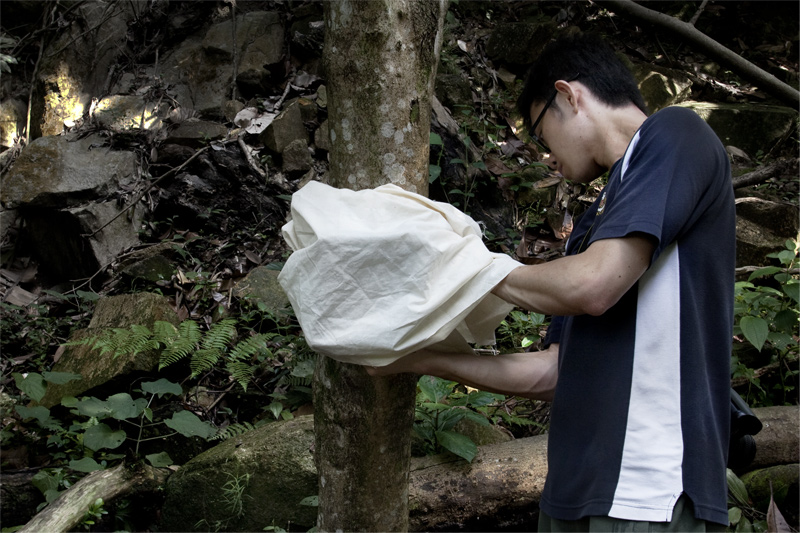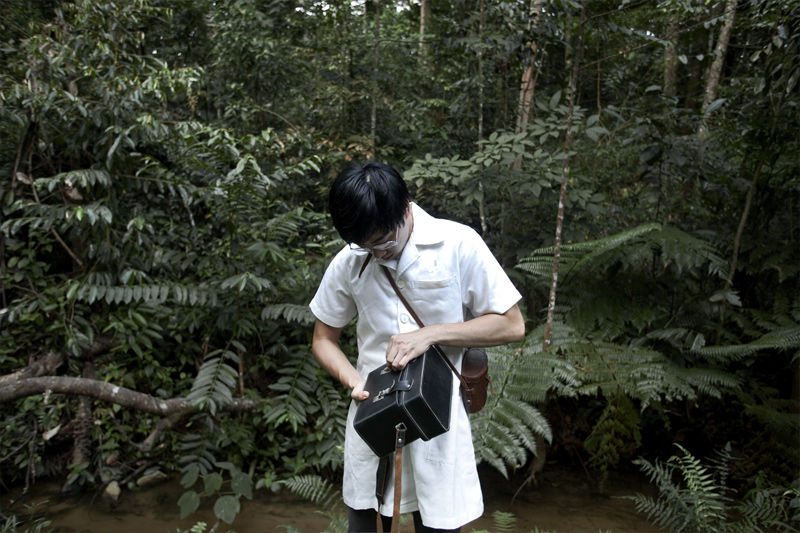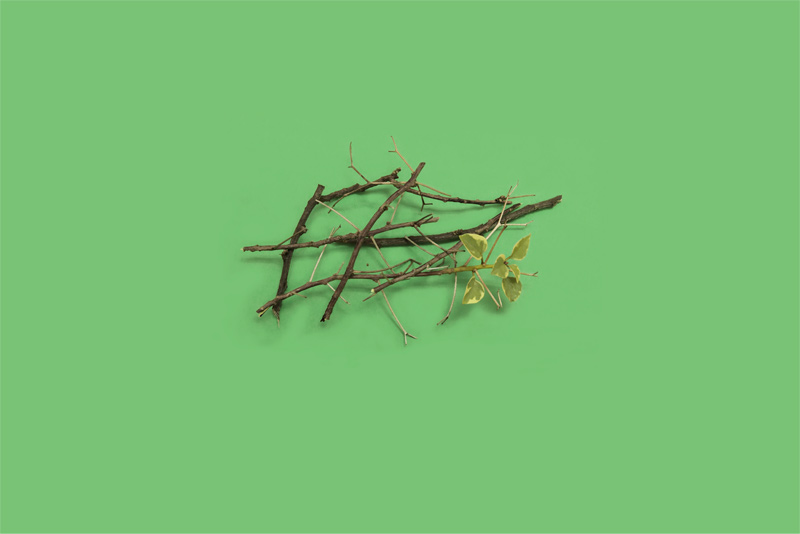SPECIAL EDITION
The Great Pretenders; Description Of Some Japanese Phylliidae From The 26th Phylliidae Convention
Special Mention, Yuji Hyakutake
Special Mention, Kiichiro Furukawa
New Culture Award, Minoru Honda
New Culture Award, Iwahashi Zenbei
The Art Of Hiroshi Abe, Master Breeder And Artist
A Very Pretty Phylliidae: Phyllium Morosus (First published in 1989)
All images by the ICZ
The GREAT PRETENDERS
A Very Pretty Phylliidae: Phyllium Morosus
(First published in 1989)
Hiroshi Abe
Abstract
This paper reports the results of Phyllium morosus collecting over aperiod of two years in Singapore. Five populations have been collected; many of the records are new to the particular localities. Notes on food plants are included, along with a brief guide to the appearance of the location.
Keywords Phyllium morosus, Singapore, Bukit Timah, Microcos paniculata.
Introduction
In February 1988, I worked in Singapore for two months as a research assistant in a local museum. As I already had a passion for studying Phylliidae, I wanted to take advantage of my time in this country and search for the local species. It was a laborious start as I was totally inexperienced and the locals were ignorant about the presence of Phylliidae - they mistook the photos I was showing to them for grasshoppers, butterflies, dragonflies or cockroaches. After some locals gave me a lot of fanciful particulars that were dead leads, I finally found my first Phylliidae by a lucky chance, on a twig in a park where I jogged regularly but did not consider a breeding ground. Later my searches proved to be a little easier than I thought. I realised that the main difficulty was not to find the Phylliidae, but the forests!
Bukit Timah Area
To my knowledge, the central catchment forest of Singapore, unlike the area of Nee Soon in north-east of Singapore, has never been the object of a study about Phylliidae. So there had been no documentation of the species present in this area. From February to April 1988, I found five specimens of Phyllium morosus there.
Geographical situation
The region of Bukit Timah, where I mainly prospected, forms the western part of the old region. It is surrounded by the city. Until recently, all the hills were covered with dense forest. The climate is tropical. The humidity remains high all year round and climaxes during the monsoon.
Collection methods
I always collected in the daytime, because it was difficult to move in the forest at night and impossible to lodge there. The first thing to do was to spot bushes with traces of eating characteristic of Phylliidae and to scrutinize all over- on or under the leaves, on the steams, in the interlace of bare branches in the heart of the clump, etc. When the food plant was determined and when the habits of diurnal camouflage of the wanted species is known, the search often became quite easy. I also used a beating tray which was sometimes fruitful. The main problem was to protect oneself against mosquitos. The bites of red ants were not really agreeable. Snakes are not abundant, and monitors were at least as scared by me as I was by them at first!
The best places to find Phylliidae were in forests, but I also found some in two urban areas. I found just two specimens on the edge of high thickets, far from the trees. Their favourite haunts appeared to be the zones of secondary forests with fairly thick and low vegetation. They were more scarce in the primary forests where I never found them except at the fringe. One might hypothesise that in the secondary forest where the replanted trees were generally not indigenous species, the Phyllidae did not climb them and stayed exclusively at the level of the shrubs where the local species they eat were found, whereas in the primary forest they ccould find food above and thus slip out my searches.
The food plants were little diversified: the one hosting the greater number of species of Phylliidae was assargach which was very common; most of the time you found it in the shape of a bush but it is actually a tree, as is sheoragach which you also found in the shape of small bushes.
Specimen 1
It was found in Bukit Timah, 200m from the ranger station. (Figure 1)
It is an apterous leaf insect. The body length of the specimen is 90-100mm. This species was first described from Sabah in 1879 by Wood-Jones who placed it in his new genus Morosus. The genus is similar to the related Haaniella. The abdomen ends in a light brown tapering point. The head presents two small black horns. The filiform male measures about 80mm with antennae of 21mm. Its body is brown with a lot of variations. The extremity of the abdomen is cleft.
The specimen feeds mainly on Microcos paniculata, but I sometimes found it on Bridelia stipularis.
Specimen 2
It is also found near the ranger station. (Figure 2)
The specimen measures 120-125mm with a width of 4-5mm at the fourth and the fifth abdominal segments level. Its colour is a yellowish green more or less light according to the individuals (with some scarce light brown specimens). The antennae are 15-20mm long. The abdominal extremity is bilobate.
The filiform measures about 90mm. The main colour is brown, but the mesothorax and the metathorax are bright red on the two sides with bright green lateral strips (these colours became dim for an unknown reason). The abdominal extremity is cleft.
This species feeds on Microcos paniculata.
Specimen 3
It is found near the foot of Bukit Timah Hill.
This is a winged leaf insect. The specimen is green or more scarcely brown; its length is more or less 88mm with antennae of about 62mm. The wings are 47mm long; they lightly overreach the fifth abdominal segment; unfolded, they present a blackish colour.
This species feeds on Microcos paniculata.
Specimen 4
This specimen is found on the ridge of the forest.
This specimen is very similar to Specimen 1 but stands out particularly with its size and the colour. The specimen is larger (about 110mm) and much darker, with bigger variations of colour from one specimen to another (from deep brown to deep green).
This species feeds on Microcos paniculata.
Specimen 5
This is a brown or straw-yellow winged leaf insect. In the manner of Phyllium sipylus, which it resembles a lot, it gives off a rank odour of crunched leaves when it is disturbed. The eggs are also very similar.
The specimen measures 86mm on average with a maximum breadth of 5rnm at the meta thorax level. The antennae are 65-70mm long. The wings measure about 45mm and reach the middle of the sixth abdominal segment. Unfolded, they present sometimes a pink colour.
This species feeds on Microcos paniculata.
Defence
Nymphs try to escape by running away, adults do the same. What is not well-known, is that Phyllium species possess defence glands like those of Anisomorpha buprestoides and Oreophoetes. They are situated on both sides of the pronotum and are used against predators like birds and monkeys.
Rearing
(Figure 3) This species seems to be easier to rear than the other Phyllium species which have been in culture for some years in Europe (P. bioculatum, P. giganteum, P. pulchrifouum). Adults and nymphs should be kept warm and humid (70-80%). The food plant should be sprayed daily, this is important for the skin shedding. In these conditions nymphs take about six months to become adult.
Food plants
Bramble, oak and pyracantha are eaten, nothing else has been tried.
 Figure 1. The author’s assistant Ken acquiring Specimen 1 on the trunk of Microcos paniculata near the ranger station.
Figure 1. The author’s assistant Ken acquiring Specimen 1 on the trunk of Microcos paniculata near the ranger station.
 Figure 2. Collection of Specimen 2 near ranger station with Bridelia stipularis in background.
Figure 2. Collection of Specimen 2 near ranger station with Bridelia stipularis in background.
 Figure 3. The nymphs of Phyllium morosus at 3 months.
Figure 3. The nymphs of Phyllium morosus at 3 months.
Comments
This species might be a nervous one, but I still have nice memories of it. The colours of the adults differ from the dull brown or green of most other Baculum spp., which are in culture. The nymphs are very colourful as are nymphs of three of the other Baculum spp., which are in culture from Japan.
Conclusion
Whilst identification of such species is relatively easy, there are still problems caused by variation in coloration and by original descriptions and illustrations which are inadequate for distinguishing similar species.
Acknowledgements
Mr Rafikul Ahmad, chief of entomological department of Malaya Forestry Research Institute in Malaysia, for having helped me at the beginning of my searches and Ken for having heroically faced the mosquitos in my company.
Copyright 2010, Institute of Critical Zoologists